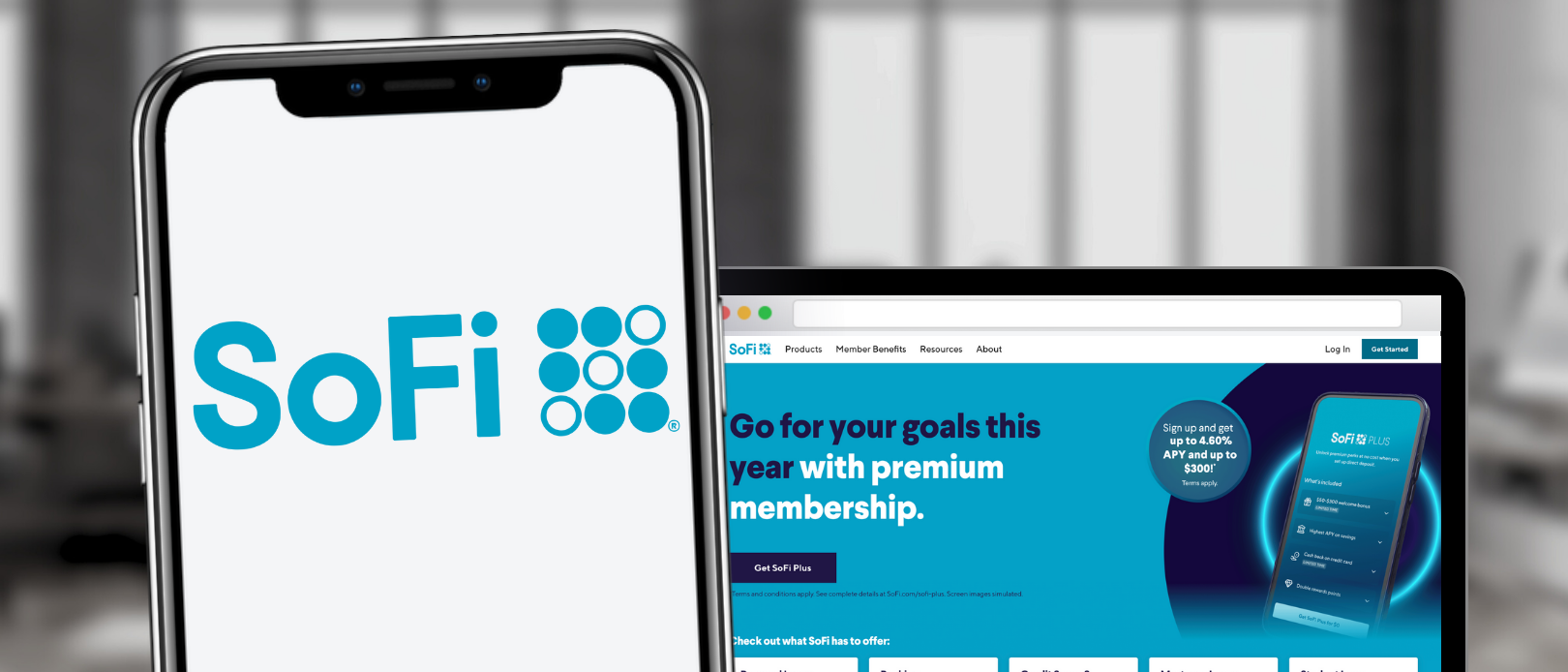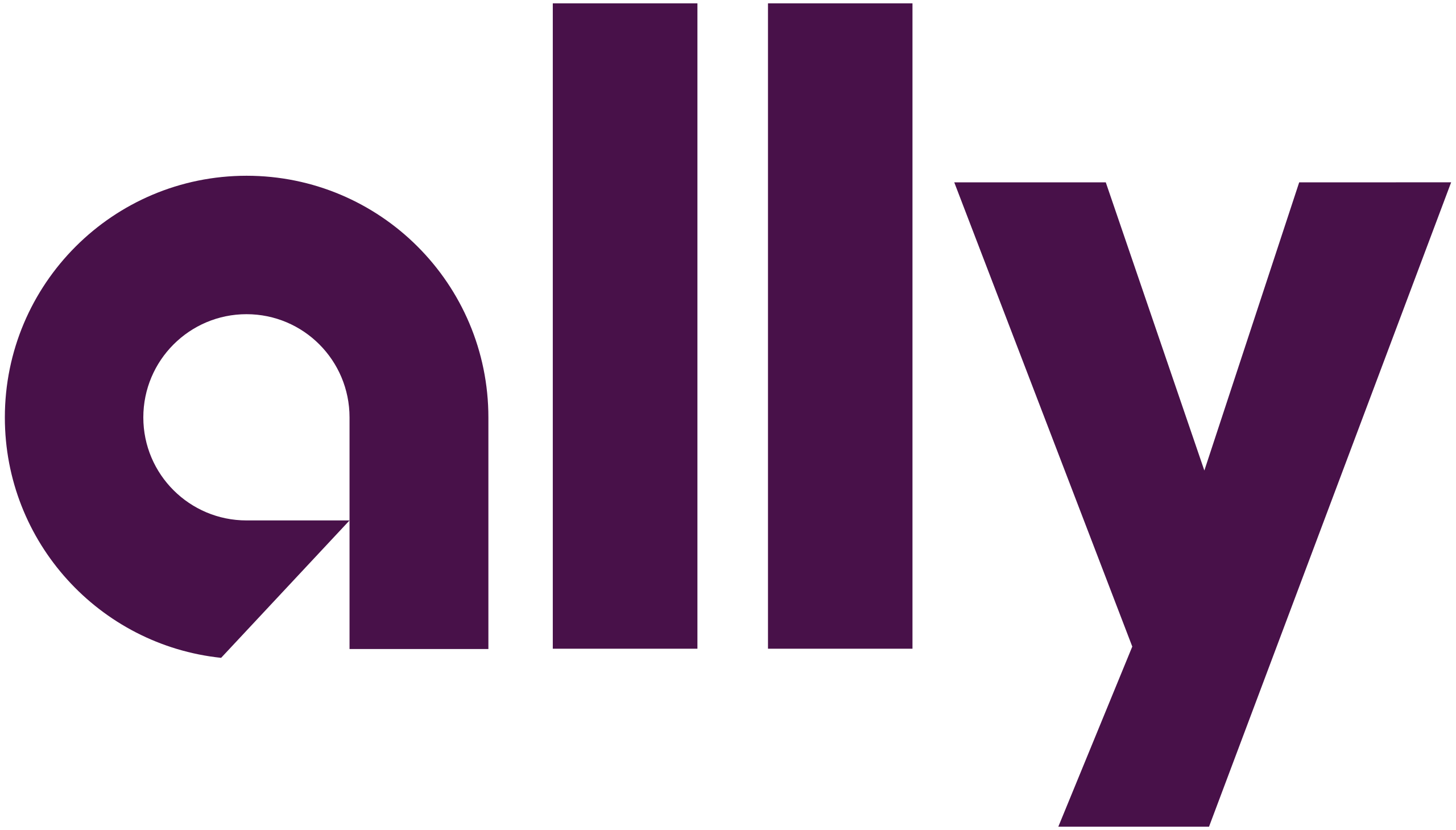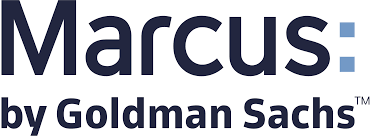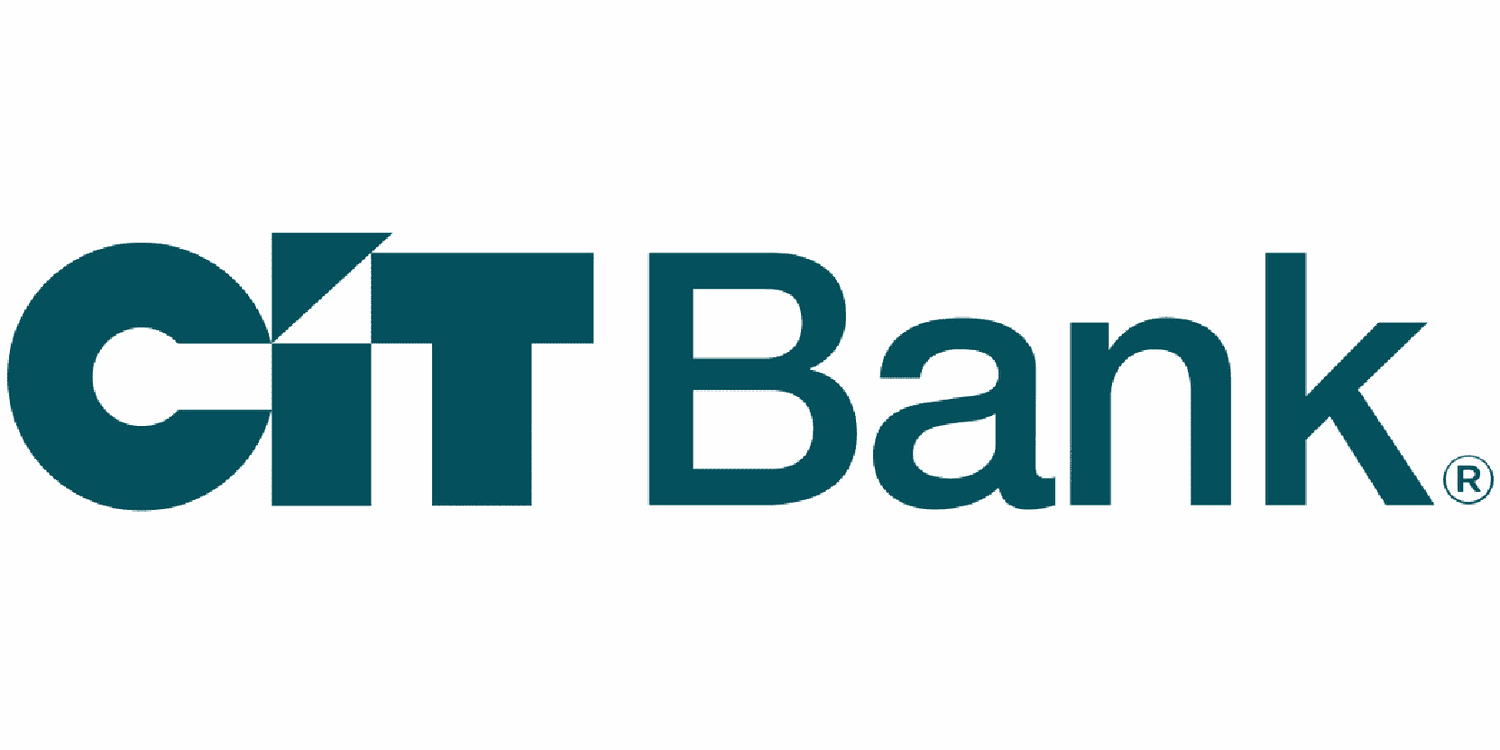
SoFi Bank review 2025
Moneywise.com doggo / Moneywise.com
Updated: March 07, 2025
About SoFi®
Online banks are working harder than ever to create one-stop shopping for financial services. SoFi is no different, integrating various financial services – from personal loans and mortgage refinancing to investment products and savings accounts. This approach positions SoFi as a full-suite financial house, particularly appealing to millennials and Gen Z consumers who favor tech-driven, all-in-one solutions.
SoFi tries to differentiate with its focus on “membership” with customers gaining access to an array of traditional and non-traditional services ranging from checking and savings accounts to financial planning services. SoFi's investment arm, SoFi Invest, allows users to trade stocks and ETFs, invest in cryptocurrency, and even partake in automated investing, catering to both seasoned and novice investors.
SoFi's recent acquisition of a national bank charter has bolstered its position and drives an even wider range of products and services while improving its interest rates and lending capabilities. The expansion positions SoFi as a formidable competitor in the world of digital banking, extending way past its student-loan refinancing roots when the company was founded in 2011.
Banking with SoFi®
Created by a group of Stanford University business students, SoFi rose to prominence on its unique proposition to customers beset by expensive student loans. As those loans weighed down borrowers, SoFi capitalized by offering attractive refinancing rates.
But since 2019, SoFi has experienced a significant drop in loan origination volume. Eager to avoid the fate of one-note companies, SoFi has worked hard to diversify its portfolio to include traditional banking, mortgages, personal loans, credit cards, and investment products. Student loan financing remains an important component, however, acting as both a revenue generator and a way of gaining and retaining customers for its expanding product set.
Indeed, a visit to SoFi’s main website will find student loan refinancing jostling for position with traditional banking offerings and things like insurance products and other services.
SoFi banking features
SoFi Checking and Savings accounts, Member FDIC
Data as of February 18, 2025
- Up to 3.80% APY2with direct deposit or $5,000 or more in qualifying deposits during the 30-day evaluation period.
2SoFi members who enroll in SoFi Plus with Direct Deposit or by paying the SoFi Plus Subscription Fee every 30 days or with $5,000 or more in Qualifying Deposits during the 30-Day Evaluation Period can earn 3.80% annual percentage yield (APY) on savings balances (including Vaults) and 0.50% APY on checking balances. There is no minimum Direct Deposit amount required to qualify for the stated interest rate. Members without either SoFi Plus or Qualifying Deposits, during the 30-Day Evaluation Period will earn 1.00% APY on savings balances (including Vaults) and 0.50% APY on checking balances. Only SoFi Plus members are eligible for other SoFi Plus benefits. Interest rates are variable and subject to change at any time. These rates are current as of 1/24/25. There is no minimum balance requirement. Additional information can be found at http://www.sofi.com/legal/banking-rate-sheet. See the SoFi Plus Terms and Conditions at https://www.sofi.com/terms-of-use/#plus.
SoFi fast facts
1New and existing Checking and Savings members who have not previously enrolled in Direct Deposit with SoFi are eligible to earn a cash bonus of either $50 (with at least $1,000 total Direct Deposits received during the Direct Deposit Bonus Period) OR $300 (with at least $5,000 total Direct Deposits received during the Direct Deposit Bonus Period). Cash bonus will be based on the total amount of Direct Deposit. Direct Deposit Promotion begins on 12/7/2023 and will be available through 1/31/26. See full bonus and annual percentage yield (APY) terms at sofi.com/banking#1.
7Overdraft Coverage is limited to $50 on debit card purchases only and is an account benefit available to customers with direct deposits of $1,000 or more during the current 30-day Evaluation Period as determined by SoFi Bank, N.A. The 30- Day Evaluation Period refers to the “StartDate” and “EndDate” set forth on the APY Details page of your account, which comprises a period of 30 calendar days(the“30-DayEvaluationPeriod”). You can access the APY Details page at any time by logging in to your SoFi account on the SoFi mobile app or SoFi website and selecting either (i) Banking> Savings> Current APY or (ii) Banking> Checking> Current APY. Members with a prior history of non-repayment of negative balances are ineligible for Overdraft Coverage.
Checking accounts
SoFi’s traditional offerings focus on convenience and value. Their lack of fees and minimum balance requirements appeal to cost-conscious consumers, and SoFi's checking accounts often feature competitive interest rates, allowing customers to earn more on their deposits compared to traditional checking accounts.
SoFi's checking accounts integrate with the company’s comprehensive digital platform, offering easy online access and a user-friendly mobile app. Customers can easily manage their funds, get real-time notifications, mobile check deposits and free bill pay. SoFi also extends benefits like access to 55,000+ fee-free ATMs within the Allpoint® Network5, making cash withdrawals more convenient.
5SoFi has partnered with Allpoint to provide you with ATM access at any of the 55,000+ ATMs within the Allpoint network. You willnot be charged a fee when using an in-network ATM, however, third-party fees incurred when using out-of-network ATMs are not subject to reimbursement. SoFi’s ATM policies are subject to change at our discretion at any time.
Savings accounts
SoFi's savings accounts are particularly appealing for those looking to maximize their savings with competitive interest rates and user-friendly online banking experiences.
At the forefront is SoFi's high-yield savings account, a standout product for savers looking to grow their funds beyond the lower rates typically found at local, brick-and-mortar banks. SoFi combines highly competitive annual percentage yields (APY) with no monthly fees, making it attractive to those who want to save without getting nicked by charges.
One of SoFi’s savings advantages is ease of use and accessibility. With a strong emphasis on digital banking, SoFi allows customers to manage their savings on the go, either online or through a mobile app.
Inside the ‘Vault’
Got a target in mind for your money? SoFi offers account holders “Vaults” within their savings account. These vaults can be designated for specific saving goals, like a vacation fund or emergency savings, which helps customers organize and track their saving objectives more effectively.
SoFi integrates these savings accounts with their broader range of financial products, like personal loans and investment options, providing a comprehensive financial ecosystem for users. This integration can be particularly helpful for individuals looking to streamline their financial management across multiple platforms. And yes, SoFi Checking and Savings deposits are FDIC-protected up to $250,000. Plus, you can access additional insurance up to $3M on deposits through a seamless network of participating banks.4
4SoFi Bank is a member FDIC and does not provide more than $250,000 of FDIC insurance per depositor per legal category of account ownership, as described in the FDIC’s regulations. Any additional FDIC insurance is provided by the SoFi Insured Deposit Program. Deposits may be insured up to $3M through participation in the program. See full terms at SoFi.com/banking/fdic/sidpterms. See list of participating banks at SoFi.com/banking/fdic/participatingbanks.
Pros and cons of SoFi
Pros
-
Competitive interest rates: SoFi Bank offers high-yield savings accounts with competitive interest rates. This means your savings can potentially grow faster compared to traditional savings accounts with lower rates. Unique savings offerings – such as the bank’s “Vaults” feature – help customers lock in on savings goals.
-
No account fees: SoFi’s typically doesn't charge monthly account fees - great for savers who won’t have to worry about fees eating up their money.
-
All-in-one financial platform: SoFi provides a comprehensive range of financial products and services, including loans, investment options, insurance, and more. This integration allows for a seamless financial management experience, making it easier for customers to manage all their financial needs under one roof.
-
Non-traditional offerings: SoFi member perks include access to financial planning, estate planning, travel booking, even networking events.
Cons
-
No physical branches: SoFi operates as an online bank. For customers who prefer in-person banking services or need regular access to physical branches, this could be a drawback.
-
No CDs: SoFi doesn’t offer certificates of deposit and opts for pitching its high-yield savings accounts as alternatives. Those rates may not be competitive with other banks’ CDs.
-
Limited ATM network: Although SoFi provides ATM access, its network may not be as extensive as those of larger, traditional banks. This could be inconvenient for those who frequently need cash.
-
Customer service limitations: While SoFi offers customer support, some users have reported challenges with getting timely or effective assistance. SoFi’s predominantly digital nature could be a factor, especially for those who prefer more direct, personal customer service interactions.
How to open a SoFi account
If you’re considering switching banks or just starting a new account, it’s important to understand your options and pick a bank that aligns with your financial goals and meets your convenience needs.
If that’s SoFi, start by navigating to SoFi's official website. Select the type of account you wish to open, such as a checking, savings, or investment account.
To create an account, click on the option to create a new account. You will be prompted to provide your email address and create a password.
Complete the application form by entering your personal details, usually your full name, address, Social Security number, and possibly information about your employment and income. To comply with banking regulations, SoFi will require you to verify your identity. This might involve uploading a government-issued ID and possibly additional documentation.
Next, carefully review the terms and conditions, privacy policy, and any other relevant agreements or disclosures. If you agree, accept the terms.
Once your account is live, you can link an external bank account to transfer funds into your new SoFi account. There might be an initial deposit requirement depending on the account type.
For easy account management, consider downloading SoFi's mobile banking app, available on both iOS and Android platforms.
After your account is active, you can set up additional features like direct deposit, automatic bill pay, or overdraft protection, depending on the account type.
Remember, the exact steps may vary slightly depending on the specific type of account you're opening and your personal circumstances. If you need assistance during the process, SoFi usually offers customer support through various channels, including phone, email, or chat.
Other SoFi® financial products
As SoFi’s array of offerings extends well past traditional banking, it’s tempting to forget SoFi still offers the service that fueled its rise: student loan refinancing. Competitive rates and no fees position SoFi well in the hotly contested loan refinancing game it helped pioneer.
SoFi’s stable of products also includes personal loans, mortgage loans, credit cards, access to insurance plans, investing and more.
SoFi banking alternatives
Ally Bank

4.0
Ally Bank is renowned for its high-yield savings accounts with competitive interest rates and no monthly maintenance fees. It's also known for excellent customer service and a user-friendly online banking experience. Like SoFi, Ally operates primarily online, meaning there are no physical branches for in-person banking needs.
Marcus by Goldman Sachs

3.5
Marcus offers high-interest savings accounts with no fees and a simple, easy-to-use online platform. It's backed by the financial expertise of Goldman Sachs, adding a level of credibility and security. Marcus doesn’t provide a checking account option, which can be a limitation for those seeking a full-suite banking experience.
Chime
4.3
Chime is a fintech company that offers fee-free checking and savings accounts, and it's known for features like early direct deposit and automatic savings tools. Its savings account interest rates might not be as high as some competitors, and like others, it operates mainly online with limited physical presence.
CIT Bank

4.3
CIT stands out with high interest rates on savings accounts and CDs. The absence of account maintenance fees across all its banking products helps, and CIT recently introduced an eChecking account that also earns interest. While the bank does not have its own ATM network, it compensates by offering reimbursements of up to $30 monthly for fees incurred at other banks' ATMs.
Quontic Bank

4.5
Quontic stands out for its high-yield savings accounts, competitive mortgage options, and innovative checking accounts. The bank even offers a Bitcoin Rewards checking account, which provides the cryptocurrency as rewards for debit card use. Quontic also wins raves for its customer service. Quontic is a strong choice for those seeking a modern banking experience with a tech-savvy twist.
SoFi banking FAQs

Chris Clark is freelance contributor with MoneyWise, based in Kansas City, Mo. He has written for numerous publications and spent 18 years as a reporter and editor with The Associated Press.
Disclaimer
The content provided on Moneywise is information to help users become financially literate. It is neither tax nor legal advice, is not intended to be relied upon as a forecast, research or investment advice, and is not a recommendation, offer or solicitation to buy or sell any securities or to adopt any investment strategy. Tax, investment and all other decisions should be made, as appropriate, only with guidance from a qualified professional. We make no representation or warranty of any kind, either express or implied, with respect to the data provided, the timeliness thereof, the results to be obtained by the use thereof or any other matter. Advertisers are not responsible for the content of this site, including any editorials or reviews that may appear on this site. For complete and current information on any advertiser product, please visit their website.
†Terms and Conditions apply.






